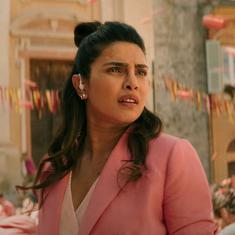“The focus is on convergence in the activities of various Ministries where one cabinet Minister will be heading a cluster of Ministries who are working in complimentary sectors,” the statement said. “Mr Modi is eventually aiming at Smart Governance where the top layers of Government will be downsized and there would be expansion at the grass root level.”
As of Monday night, it is still uncertain who will get which portfolio, but the broad outlines — as well as the names of all of the ministers — have been confirmed. In sheer numbers, there is no question that Prime Minister Modi’s cabinet will be unlike the one that preceded it. From 70 under the United Progressive Alliance, the Council of Ministers now has only 45 members.
And from leaks, sources and speculation, it seems likely that the incoming PM will also have kept his word of focusing on “organic ministries” by clubbing together those departments that seem to work together.
Indications have suggested, for example, that the power and coal ministries will both be overseen by Piyush Goel — a very significant combination, considering the potential convergence of an overall energy policy for the country. The expected merger of the Panchayati Raj ministry and the Rural Development one under Gopinath Munde also fits into the synergy model.
“In the sense of improving administration it’s certainly a good idea, and a positive step forward,” said Yamini Aiyar, a senior research fellow at the Centre for Policy Research and director of the Accountability Initiative. “The question that remains is what this means further on. There is a big potential risk in over-centralisation. Too much centralisation is not a good thing, but then having large cabinets with internal squabbles isn’t good either, so there needs to be a balance.”
In particular, concerns were raised about the potential grafting together of ministries with none of the synergistic qualities that would make them a natural fit.
Ravishankar Prasad, for example, is tipped to be given charge of the Law ministry, where plenty of work is lined up for a minister thanks to expectations that a BJP-majority government should be able to move legislation through Parliament much quicker; not to mention matters of judicial and administrative reform. But Prasad is now also expected to be given the telecom ministry, which also has no dearth of issues to sort out.
Similarly, Arun Jaitley has reportedly been given two of the all-important Raisina ministries — finance and defence — jobs that are usually given in entirety to one dedicated minister each.
“There will be some synergies and some conflicts of interest,” said former Union secretary EAS Sarma, over e-mail. “This reorganisation may not have a significant impact on the bureaucracy except that officials in two combined Ministries will find it difficult to get adequate attention of the minister to their respective urgent matters.”
With 11 ministers of state and 10 independent charge, many also believe the cabinet has been built in this way to allow the Prime Minister’s Office to play a bigger role. This is expected to be borne out through the appointment of technocrats to various departments over the next couple of weeks in a manner that would make them influential enough to affect policy. The other speculation suggests the numbers were kept down primarily to send a “minimum government, maximum governance” message out, and that there will be a cabinet expansion soon — possibly after the budget is presented in the upcoming session of Parliament.
“The effectiveness of the government will depend more on a clear demarcation of responsibilities of the Cabinet Secretary and PMO on one hand and delegation of authority within the government [on the other],” Sarma said. “Many matters of lesser importance need not be referred to Finance Ministry and Ministry of Finance representatives, i.e. the Financial Advisers in different ministries could be given a greater authority to clear proposals.”
Crucially, Modi has spoken of a flip-side to his desire to lop off layers of the government towards his maximum governance goal. The PM had also promised expansion at the grassroots level, which might end up being at least as, if not more, important than the structuring of the ministries within the Council as of now.
“What we’re hoping is a fine balance between political power and the executive which became blurred and confused over the last two three years,” Aiyar said. “I think the best way to summarise [the reaction to Modi] would be certainly a step in the right direction, but now it all depends on how things turn out."










